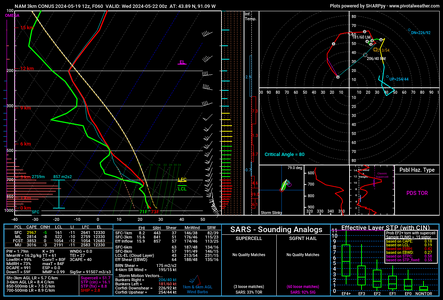Probably worth paying attention to the disturbance accompanied by SWly mid-level flow early to middle next week based on the CSU ML/AI guidance showing this:
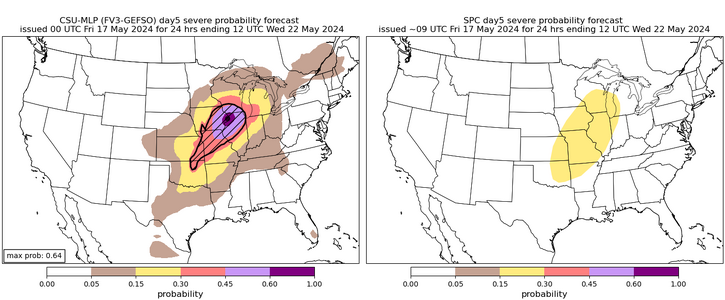
which is quite high for what that system usually puts out.
GEFS seems to be in good agreement on supercell conducive conditions:
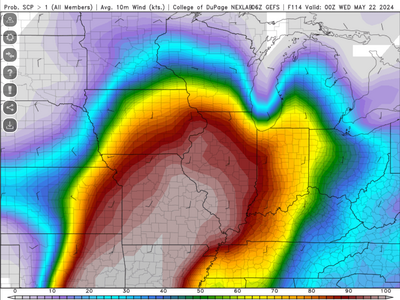
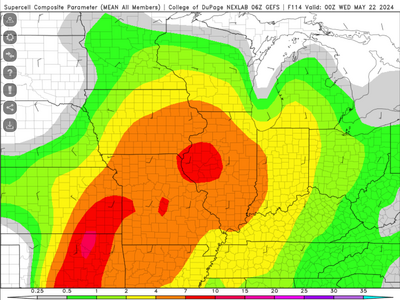
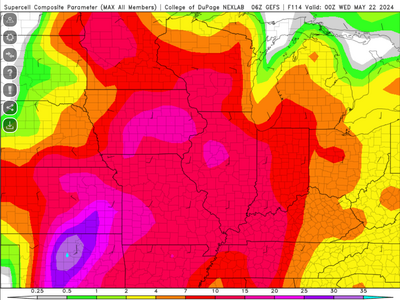
Deterministic GFS shows a broad and somewhat positively tilted trough with an axis over the northern Rockies this day. This results in fairly veered flow at all levels. Even surface winds look to struggle to back to the S and are more SSW throughout the warm sector. Pluses are great moisture for the time of year - dewpoints into the 70s well into OK and KS and possibly tipping 70 into IA/IL, but widespread upper 60s all throughout the warm sector. The moisture is deep, too. Pretty steep mid-level lapse rates as well, so high to extreme instability looks likely to materialize with a decent window where CIN drops enough to support sustained convection. Deep shear is also sufficient for supercells, although not super high.
Negatives are mostly the veered wind profile and many forecast soundings suggest some S-shape, thus possible issues with maintaining discrete supercells. Could also end up capped to the south and have little or no convective activity.

which is quite high for what that system usually puts out.
GEFS seems to be in good agreement on supercell conducive conditions:



Deterministic GFS shows a broad and somewhat positively tilted trough with an axis over the northern Rockies this day. This results in fairly veered flow at all levels. Even surface winds look to struggle to back to the S and are more SSW throughout the warm sector. Pluses are great moisture for the time of year - dewpoints into the 70s well into OK and KS and possibly tipping 70 into IA/IL, but widespread upper 60s all throughout the warm sector. The moisture is deep, too. Pretty steep mid-level lapse rates as well, so high to extreme instability looks likely to materialize with a decent window where CIN drops enough to support sustained convection. Deep shear is also sufficient for supercells, although not super high.
Negatives are mostly the veered wind profile and many forecast soundings suggest some S-shape, thus possible issues with maintaining discrete supercells. Could also end up capped to the south and have little or no convective activity.

